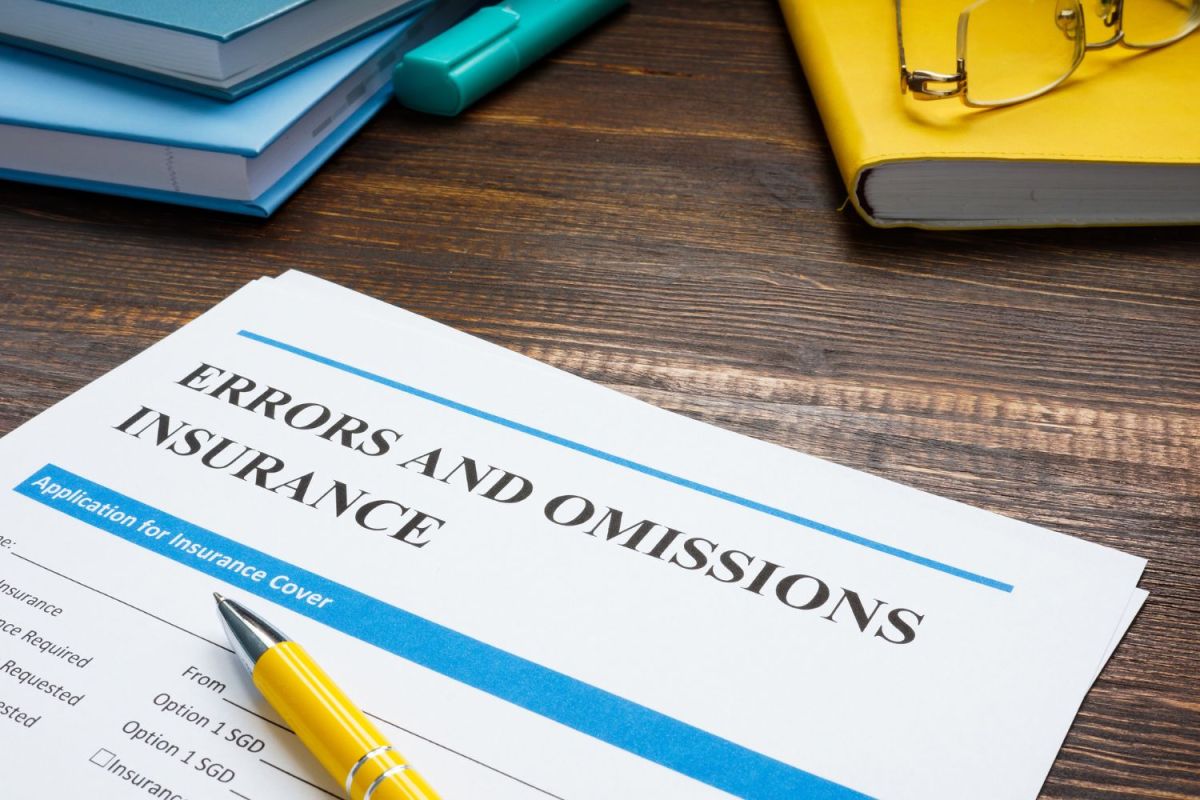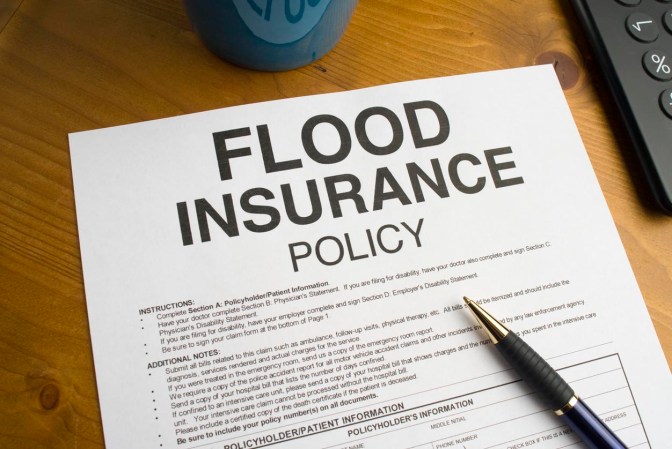We may earn revenue from the products available on this page and participate in affiliate programs. Learn More ›
Highlights
- The national average cost for errors and omissions insurance coverage is $61 per month, or $735 per year.
- The main factors that determine the cost of coverage include the industry and geographic location in which the business operates, the coverage limits of the policy, the business’s size and annual revenue, the policyholder’s claims history, and the policy deductible.
- Errors and omissions insurance may be required by the business’s industry, state, or clients. Even if not required, this coverage can help policyholders protect their business against claims of liability.
Business ownership can be rewarding and lucrative—but it can also be expensive. There are many different costs involved in running a business, from purchasing equipment to hiring employees. One expense that isn’t always top of mind is insurance coverage—and the more insurance coverage a business has, the higher the cost. But operating without business insurance can leave an entrepreneur scrambling to cover legal fees if they are sued by a client for a mistake or omission in the service they provide. That’s where errors and omissions (E&O) insurance, or professional liability insurance, comes in. This type of insurance can cover legal and court costs, settlements, damages, and other expenses related to oversights, missed deadlines, negligence, or breach of contract.
According to Tyler Peterson, head of professional risks at Hiscox Insurance, “Errors and Omissions (E&O) or professional liability insurance protects professionals from negligence or inadequate work claims. It’s vital for anyone involved in home renovations from general contractors and subcontractors such as plumbers, electricians, architects, flooring experts and interior designers to landscape architects, independent handypeople and more.”
Van Carlson, CEO and founder of SRA 831(b) Admin, a risk management firm that administers insurance plans for businesses, agrees. “[E&O insurance is necessary for] anyone in professional services [who is] giving advice and consulting,” he says. “It’s only required if you are entering into a contract that requires it or if the licensing in your state requires it.”
But how much does errors and omissions insurance cost? According to Insureon, business owners pay an average of $735 per year for E&O coverage, which works out to $61 per month. However, the exact cost of coverage depends on multiple factors, from the industry in which the business operates to the amount of coverage the policyholder chooses. The best small-business insurance companies, such as NEXT Insurance and Thimble, typically offer E&O insurance alongside other types of coverage for business owners to protect their assets.
Factors in Calculating Errors and Omissions Insurance Cost
Business owners will come across numerous factors when determining the cost of errors and omissions insurance. These include the industry in which the business operates, the geographic location of the business, the business’s size and annual revenue, the business owner’s insurance claims history, and the policy coverage amount and deductible.
Industry
Certain industries carry higher risks of legal action than others—and some industries tend to have much more expensive claims than others. This can directly affect the cost of insurance for errors and omissions. Some of the most costly industries for E&O insurance coverage include health care, legal, real estate, construction, engineering, and architecture. That’s because an error made by an individual in one of these professions could lead to a much more costly lawsuit than an error made by a professional in a lower-risk industry, such as photography or bookkeeping.
For example, if an architect makes a mistake in a building design, or a construction company makes an error during a building project, the entire structure of the building is at risk of collapse. Conversely, if a photographer takes a bad photo or a bookkeeper makes a slight mistake in a customer’s payroll, the overall expense of any resulting lawsuit will be much lower.
Geographic Location
The geographic location of a business can also affect how much it will pay for errors and omissions insurance. Some states have minimum E&O insurance coverage requirements for certain professions, which would typically result in higher premiums. The frequency of lawsuits in each industry also varies from state to state, so insurance for a high-risk profession like construction could cost more in one state than another. Those who operate their business in multiple states can expect to have even higher E&O insurance costs.
Coverage Limits
The cost of an E&O insurance policy can also depend on the amount of coverage a business owner chooses. In some cases, they may be required by state law or professional industries to carry a minimum amount of E&O insurance coverage. Business owners who opt to purchase additional coverage will pay more for their policy.
The typical coverage limit for an E&O insurance policy is $1 million per occurrence and $1 million aggregate, though coverage can range between $250,000 and $2 million. While the policy is in place, the insurer will pay up to $1 million to cover a single claim (per occurrence) and up to $1 million for the lifetime of the policy (aggregate).
Annual Revenue
The more money a business makes, the higher its risk of lawsuits. When a business owner requests an E&O insurance quote, the insurer will likely ask them to provide proof of revenue and use that information to calculate an insurance quote. If the business is sued by a client, any resulting settlement is likely to be larger if the business has a considerable amount of annual revenue. Conversely, a business with a more conservative annual revenue is less likely to be asked to pay a huge settlement.
Business Size and Number of Employees
The size of the business will have an impact on the cost of professional liability insurance. The larger the business and the more employees it has, the greater the risk of an error occurring. This raises the chances of the business filing a claim with its insurer.
Claims History
Business owners with a history of lawsuits are seen as a higher risk by E&O insurance companies, and will therefore pay higher professional liability insurance rates. Since the owner has been involved in previous lawsuits, the insurer assumes that there’s a decent chance that they will be involved in more lawsuits in the future. The more lawsuits a business owner is involved in, the more claims they will need to make on their E&O insurance.
According to Carlson, “There is literally no difference than any other [type of insurance]—the frequency of claims is going to drive rates making it impossible to get coverage and much more expensive when you renew.”
Deductible
A deductible is the amount of money a policyholder must pay out of pocket before their insurance coverage will pay out. For errors and omissions insurance, there are two types of deductibles:
- First-Dollar Defense (FD): The policyholder will only need to pay this deductible if a claim reaches a judgment or a settlement is ordered.
- Defense-and-Loss (DL): The policyholder will be required to pay this deductible for defense costs as well as paid claims.
When a business owner takes out an E&O insurance policy, they will need to choose the type of deductible they would like. This will directly affect the insurance premium; choosing an FD deductible will result in a higher premium than choosing a DL deductible.
“First-dollar defense is just that—you pay the first-dollar loss on legal bills,” explains Carlson. “Same as a property deductible you would have. Defense and loss deductible means if you lose and there is a judgment against you, you will have to pay. Assuming your general liability will cover it, you would pay a portion of that judgment and your policy would pick up the difference.”
“Most general liability policies have a first-dollar defense deductible, or loss only deductible, that provides an alternative whereby the insurer pays to defend a business (from the first dollar),” Peterson adds. “If only defense costs are incurred and there is no claim payout, the business is not responsible for any payment to the insurer up to their policy limit. However, if an indemnity is paid, the insured is responsible for the deductible amount.”

Do I need errors and omissions insurance?
Errors and omissions insurance is typically recommended for any business that deals with customers. It can help protect the business from expensive lawsuits and is generally a low-cost type of coverage. However, there are certain times when E&O insurance is required: There may be industry requirements, state requirements, or client requirements. And even if there are no specific requirements, E&O insurance is still a good idea to protect the business against liability.
Industry or State Requirements
In some industries and states, carrying E&O insurance is a requirement. For example, attorneys and medical professionals (including doctors, nurses, and mental health providers) are often required to carry this type of coverage. Legal and medical malpractice insurance is a type of E&O insurance, and since both legal and medical professions are high risk when it comes to liability, it’s smart for these businesses to have coverage even if their industry or state doesn’t require it.
E&O coverage for insurance agents and financial professionals may also be required. This coverage may be required by investors in the company, or by regulators such as the Financial Industry Regulatory Authority (FINRA). Other professionals that may need to have errors and omissions insurance coverage include graphic designers, marketing consultants, and advertising agencies.
Client Requirements
Some clients—especially larger ones—may require a business they work with to have E&O insurance. There are several types of insurance needed for contractors, and E&O insurance may be a requirement, particularly if they work on government projects per the Federal Acquisition Regulations (FAR). Business owners will want to check with their clients to see if they have specific requirements regarding E&O insurance coverage.
Business Liability Protection
Regardless of industry, state, or client requirements, E&O insurance is a smart choice for any business. It provides business liability protection to help cover legal costs and damages resulting from a mistake or error the business made that caused a client to sue the business. Without E&O insurance, the business would be on the hook to cover these costs. Since legal costs can be vast, covering them could cause bankruptcy. In general, errors and omissions insurance is recommended for any company that provides professional advice or services to its customers.
How to Save Money on Errors and Omissions Insurance Cost
Insurance coverage is an important part of any business’s operating budget. However, small-business insurance costs can quickly rise—especially for companies that have multiple types of coverage. In addition to searching for cheap E&O insurance coverage, there are several ways for policyholders to save on the cost of E&O insurance.
- Shop around for coverage. Before choosing a policy, business owners can request quotes from several providers and opt for the one that best fits their coverage needs and budget.
- Pay premiums annually. “A simple way to save on your coverage is by paying your premium up front,” says Peterson. “Most insurers will offer an option to pay on a monthly or annual basis. If you have the funds to pay at once, like a fitness membership, you’ll likely receive a better or discounted rate.”
- Opt for a higher deductible. Choosing a high deductible means the policyholder will have lower premiums—but before going this route, they’ll want to make sure they can pay the deductible if they’re facing a lawsuit.
- Bundle multiple policies. Some insurance companies may offer a discount for customers who take out several insurance policies with the same provider. “When it comes to bundling or adding coverage, explore your options and see if your business is eligible to do so,” advises Peterson. “Some small businesses may be able to benefit from bundling different types of coverage with their E&O policy, like adding a cyber policy to ensure they are covered for the technology they use.”
- Avoid lapses in coverage. E&O insurance is considered a “claims-made” policy, which means coverage is only in place while the policy is active. If the policy lapses, the business owner may find that a previously covered claim is no longer covered. Therefore, keeping a continuous policy in place can save entrepreneurs money in the long term.
- Implement a risk-management strategy. The higher a business’s liability risk, the more an E&O insurance policy will cost. A solid risk-management strategy can help a business owner avoid the types of situations that may lead to legal action, which can reduce their risk to an insurance company.
The most significant way to lower E&O insurance premiums is to opt for a first-dollar risk deductible. As Carlson explains, “There isn’t much you can do to lower the cost except take more first-dollar risk. Take a higher first-dollar loss before the insurance kicks in. You can exclude specific coverages if you don’t have those exposures but most carriers shy away from that practice.”
Questions to Ask About Errors and Omissions Insurance
When shopping for an errors and omissions insurance policy, business owners will want to make sure they thoroughly vet each provider to find the one that offers the coverage they require for a price within their budget. Business owners can ask some or all of the following questions while shopping for an insurance provider.
- How do I get an E&O insurance policy?
- How much does errors and omissions insurance cost?
- Who and what will be covered by the policy?
- What scenarios will not be covered by the policy?
- What are the limits on the policy?
- What deductible options do you offer?
- How do I file a claim?
- What other business insurance coverage options do you offer?
- Do you offer E&O insurance for insurance agents?
FAQs
With so many different types of business insurance coverage options, it’s important for a business owner to have a full understanding of each. The following are some of the most common questions about E&O insurance, as well as their answers, to aid in a business owner’s understanding of this type of coverage.
Q. What does error and omissions insurance cover?
Errors and omissions insurance covers legal costs that occur if the business is sued by a client due to a mistake it made that resulted in a financial loss for the client. The following are some of the costs that E&O insurance can cover.
- Attorney fees to represent the business’s interest in the lawsuit.
- Court costs such as paying for witnesses or reserving a courtroom.
- Administrative fees like paying for court reporters or legal office managers.
- Judgments or settlements ordered by a court, which can be anywhere from a few thousand to several million dollars.
Q. What is the difference between errors and omissions and general liability insurance?
Although general liability and E&O insurance both provide liability protection, each covers different types of risks.
- General liability insurance covers third-party property damage and medical expenses related to accidental injuries to non-employees.
- Errors and omissions insurance covers financial losses caused by an error or mistake made by the business.
General liability insurance is likely to be required by the state in which the business is located. However, business owners who opt for both general liability and E&O insurance coverage can more fully protect the business against different types of liability.
Q. Is errors and omissions insurance the same as cyber insurance?
Both E&O insurance and cyber insurance can cover data breaches, but they are not the same.
- Cyber insurance helps a business cover costs related to a data breach or cyber attack that results in sensitive customer data being shared.
- Tech errors and omissions insurance covers the legal costs a business may face if a client sues them over a data breach or cyber attack.
Businesses that keep their customers’ data on file will want to strongly consider both types of coverage to protect their business assets in the event of a data breach.
Sources: Insureon

















